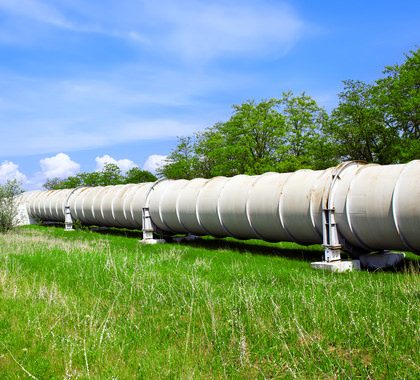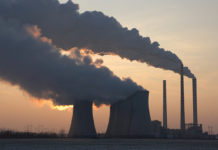
Pennsylvania is commonly called the Keystone State because of its geography, stretching from the Canadian border to the Atlantic seacoast and separating New Jersey, New York and New England from the rest of America. History played a role, too, of course, as it was the convenient place to launch a Declaration of Independence and craft a Constitution, but, today, the Keystone State represents so much more. It is reaching for top honors in natural gas production, inching ever closer to knocking Texas from the perch.
Pennsylvania’s position as the Keystone State is also reflected in its differences from New Jersey, New York and New England (the “News”) who are all net energy importers, whereas the Commonwealth is a net energy exporter. Hence, the bizarreness of Governor Tom Wolf’s attempt to put Pennsylvania into the Regional Greenhouse Gas Initiative (RGGI) carbon taxing program spawned by the “News.” He’s unlikely to get away with it in the end, though, because a large bi-partisan majority of the Commonwealth’s legislature understands the difference between its energy system and that of the “News.”
RGGI is, in fact, all about virtue-signaling. If you return to burning wood and call it renewable biomass, you stand a chance of getting plaudits in the “News,” in fact. Pennsylvania, by contrast, has made appreciable contributions to reducing greenhouse gases for those concerned about them and kept its electricity prices in the realm of reason while simultaneously ensuring the “News” have the energy they need. That’s because the Keystone State is producing natural gas at a record pace, despite COVID, depressed prices, and the Governor’s moves to indirectly squash the industry.
We know this because the Pennsylvania Independent Fiscal Office just put out a report comparing natural gas production for the first half of 2021 with the previous two years looking at top-producing states. This was the result:

Yes, Pennsylvania is gaining on Texas. Not that there’s anything wrong with Texas, but Keystone State natural gas production grew by an annual rate of 4.9% during the first two quarters of 2021, and this was following 2020 when it grew by 5.7%. Texas natural gas production, in sharp relief from Pennsylvania, has declined at a rate of 6.1% per year during the first six months of 2021, and this follows a 0.6% decline for 2020. Pennsylvania has, in other words, dramatically narrowed the gap between the two states over the last 18 months. Granted, Keystone State production is still at 76% of that in Texas, but it was only 67% in 2019. That’s quite an accomplishment!
Notice, too, that Pennsylvania accounts for 19% of all U.S. natural gas production, and Texas represents another 25%. Two states produce more than two-fifths of all the natural gas developed here in America. That is astounding in its own right.
This Pennsylvania natural gas production shows why it is the Keystone State both economically and politically as well; because it is still capable of actually doing things, of building an economy with traditional enterprises. Natural gas has revitalized several long-ignored blue-collar rural areas of Pennsylvania; places such as Bradford, Greene, Lycoming, Susquehanna and Washington Counties. It is an urban state with the 5th and 61st largest cities in America (Philadelphia and Pittsburgh, respectively), but it has enough increasingly prosperous and relevant rural areas to balance out the urban areas and create opportunities in both regions. Thank natural gas for that.
Compare this with adjoining New York and New Jersey, which lack such balance and, consequently, are a mess for the most part. They are not only dependent on the Commonwealth of Pennsylvania for their energy sustenance but are busily raising their electric rates by requiring utilities to use uneconomical solar and wind to make power that must be backed up with baseload generation via natural gas. They’ve chosen green political correctness over reality and are paying through the nose for it.
And, there’s still more to the story. That’s because the Keystone State is bordered by two other shale gas-producing states, Ohio and West Virginia. Together the three states include the bulk of the Appalachian Basin, which incorporates both the Marcellus and Utica shale formations. The Energy Information Administration recently looked at what happened in the Appalachian Basin during the same first half of the year studied by Pennsylvania’s Independent Fiscal Office:
Dry natural gas production from shale formations in the Appalachian Basin that spans Pennsylvania, West Virginia, and Ohio has been growing since 2008, and monthly production has recently set new record highs. Production in the region reached 32.5 billion cubic feet per day (Bcf/d) in December 2020, and it averaged 31.9 Bcf/d during the first half of 2021, the highest average for a six-month period since production began in 2008. The Appalachian Basin contains two shale formations, Marcellus and Utica, which accounted for 34% of all U.S. dry natural gas production in the first half of 2021. On its own, the Appalachian Basin would have been the third-largest natural gas producer in the world by the first half of 2021, behind Russia and the rest of the United States.
Get that? Pennsylvania is not only the Keystone State for a nation but also the world. A big part of the reason for the growth is the traditional economy of the region, as opposed to that of the trendy “News” states, but there is, too, the political ability to build pipelines for takeaway capacity. This is precisely why anti-fossil fuel groups have focused their attention on opposing them, but it can still happen in Pennsylvania, whereas the “News” states are becoming impossible places to build them, even though those very pipelines are absolutely essential to their future energy security.
This is one of the reasons the economy of the United States cannot grow with Pennsylvania, Texas, Oklahoma and other energy-exporting states. Again, from the Energy Information Administration:
In 2019, the top six primary energy-producing states — Texas, Pennsylvania, Wyoming, Oklahoma, West Virginia, and North Dakota — accounted for 55 quadrillion British thermal units (quads), or 55% of all of the primary energy produced in the United States. In 2000, these six states had accounted for 39% of the nation’s primary energy production, indicating that primary energy production has become more concentrated to the top producing states.
Primary energy production in the United States grew 40% from 2009 to 2019, driven largely by increased crude oil and natural gas production in Texas, Pennsylvania, Oklahoma and North Dakota. During that period, advances in hydraulic fracturing and horizontal drilling made drilling for previously inaccessible crude oil and natural gas more economical in the United States. Between 2009 and 2019, production of primary energy more than doubled in Texas and Oklahoma, more than tripled in Pennsylvania, and more than quadrupled in North Dakota.
See what I mean? Pennsylvania, together with Texas and a handful of other oil and gas states, all shale states, have the economic future and the energy security of these United States in their hands. Thank fracking, thank these states and thank the freedom that has allowed us to do all this.
About the author: Tom Shepstone is the owner of Shepstone Management Company Inc., a planning and research consulting firm located in northeastern Pennsylvania. He has advised many counties in both New York state and Pennsylvania, as well as other states, on economic development strategies, especially as they relate to rural and agricultural areas. He is also the publisher of NaturalGasNOW.org, a blog focused on the same objective.














